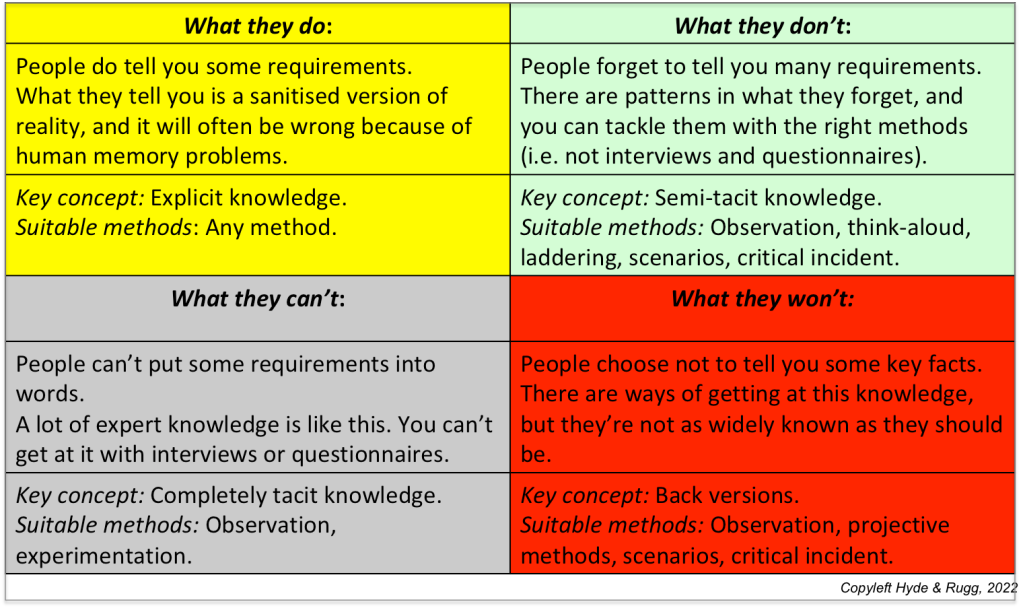By Gordon Rugg
He cried in a whisper at some image, at some vision,–he cried out twice, a cry that was no more than a breath–
“‘The horror! The horror!’
This article is one in a series about the problem of identifying and clarifying client requirements, using the ongoing semi-humorous example of a client’s requirement for an image of an elephant. The previous episodes have looked at some bad ways of tackling the problem. This episode looks at methods for tackling difficult areas of requirements gathering, where people are for various reasons reluctant to talk about a particular topic. It also looks at the underlying reasons for that reluctance.
That takes us into some uncomfortable and morally ambiguous territory, which is why I’ve opened with a quote from Heart of Darkness. If you’re trying to fix real problems, then you need to know how to find out the realities, and that isn’t always fun.
Continue reading →

